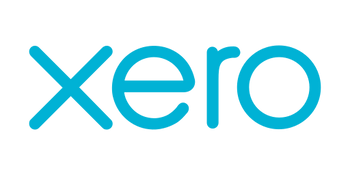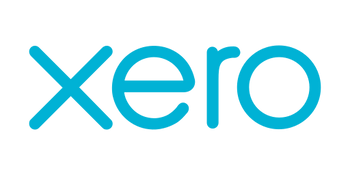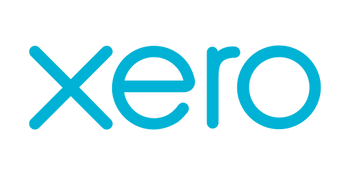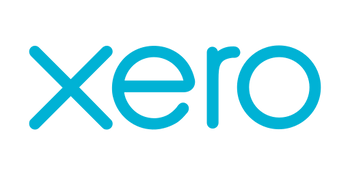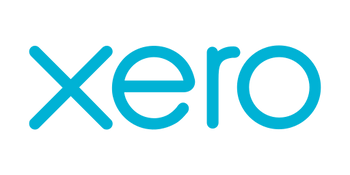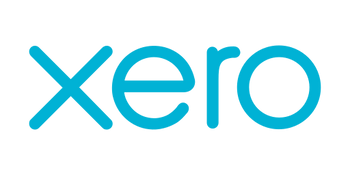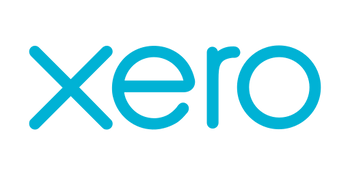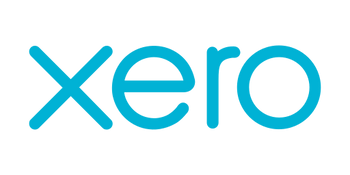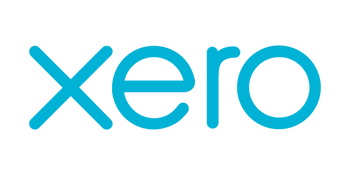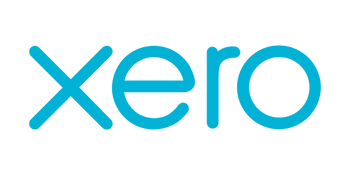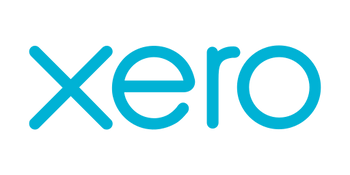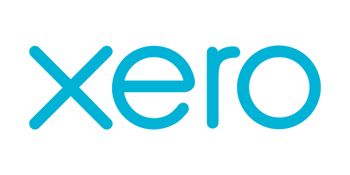{"id":9072551526674,"title":"AdRoll Update a Playbook Integration","handle":"adroll-update-a-playbook-integration","description":"\u003cbody\u003e\n\n\n \u003cmeta charset=\"utf-8\"\u003e\n \u003ctitle\u003eAdRoll Playbook Updates with AI Automation | Consultants In-A-Box\u003c\/title\u003e\n \u003cmeta name=\"viewport\" content=\"width=device-width, initial-scale=1\"\u003e\n \u003cstyle\u003e\n body {\n font-family: Inter, \"Segoe UI\", Roboto, sans-serif;\n background: #ffffff;\n color: #1f2937;\n line-height: 1.7;\n margin: 0;\n padding: 48px;\n }\n h1 { font-size: 32px; margin-bottom: 16px; }\n h2 { font-size: 22px; margin-top: 32px; }\n p { margin: 12px 0; }\n ul { margin: 12px 0 12px 24px; }\n li { margin: 8px 0; }\n \u003c\/style\u003e\n\n\n \u003ch1\u003eTurn AdRoll Playbook Updates into Continuous Marketing Momentum with AI Automation\u003c\/h1\u003e\n\n \u003cp\u003eThe ability to update an AdRoll playbook programmatically changes how marketing teams run campaigns. Instead of manually adjusting dozens of settings across audiences, budgets, and creative rules, your systems can push targeted updates that reflect the latest performance data and business priorities. This capability is about more than convenience — it lets teams move from reactive firefighting to proactive, data-driven campaign stewardship.\u003c\/p\u003e\n\n \u003cp\u003eWhen paired with AI integration and workflow automation, updating playbooks becomes an engine for business efficiency: rules respond to signals, repetitive work disappears, and teams focus on strategy and creative judgment. For operations leaders and marketing heads, this is a practical route to faster decisions, fewer errors, and measurable improvements in advertising ROI.\u003c\/p\u003e\n\n \u003ch2\u003eHow It Works\u003c\/h2\u003e\n \u003cp\u003eAt a high level, updating a playbook means changing the rules and settings that govern campaign behavior — who sees which ad, how much is bid, how budgets are allocated, and what triggers creative swaps or audience exclusions. Doing this programmatically allows your internal systems to make those changes automatically, based on data and business logic you control.\u003c\/p\u003e\n\n \u003cp\u003eImagine your analytics system notices a spike in product page views for a particular SKU. Instead of waiting for an analyst to spot the pattern and manually change bids and creative, your systems can automatically nudge the playbook: increase bids for high-intent audiences, prioritize the SKU’s creative, and shift budget from lower-performing segments. The update happens quickly, consistently, and at scale — across campaigns and geographies.\u003c\/p\u003e\n\n \u003ch2\u003eThe Power of AI \u0026amp; Agentic Automation\u003c\/h2\u003e\n \u003cp\u003eAdding AI and agentic automation turns static rule updates into an adaptive marketing nervous system. AI models can evaluate signals — conversion rates, cost per acquisition, website behavior, inventory levels, even competitor moves — and decide when and how to update playbook settings. Agentic automation enables a sequence of decisions and actions: detect an opportunity, propose a change, run a short experiment, evaluate results, and roll out the winning configuration.\u003c\/p\u003e\n\n \u003cul\u003e\n \u003cli\u003eAutonomous monitoring: AI agents continuously watch performance metrics and spot trends that warrant a playbook update.\u003c\/li\u003e\n \u003cli\u003eSmart decision-making: Models recommend targeted parameter changes (audience composition, bid strategy, creative rotation) based on historical outcomes and current business priorities.\u003c\/li\u003e\n \u003cli\u003eAutomated execution: Workflow bots implement updates across campaigns while logging changes and maintaining governance controls.\u003c\/li\u003e\n \u003cli\u003eFeedback loops: After a change is applied, agents measure impact and either scale the update or revert it if it underperforms.\u003c\/li\u003e\n \u003cli\u003eHuman-in-the-loop options: Teams can set thresholds or review recommendations before changes are enacted, preserving oversight where needed.\u003c\/li\u003e\n \u003c\/ul\u003e\n\n \u003ch2\u003eReal-World Use Cases\u003c\/h2\u003e\n \u003cul\u003e\n \u003cli\u003e\n\u003cstrong\u003eDynamic Budget Rebalancing:\u003c\/strong\u003e During a flash sale, an AI agent detects rising conversion rates on specific audiences and updates the playbook to shift budget toward top-performing segments, then scales back when margins tighten.\u003c\/li\u003e\n \u003cli\u003e\n\u003cstrong\u003eContinuous A\/B Winner Rollout:\u003c\/strong\u003e Playbooks control which creative variant runs for which audience. An automation picks the winning creative in a short test window and updates the playbook to show the winner to wider audiences automatically.\u003c\/li\u003e\n \u003cli\u003e\n\u003cstrong\u003ePersonalized Retargeting Flows:\u003c\/strong\u003e Integration with customer data platforms allows playbooks to change messaging and frequency based on recent user behavior — for example, showing a different discount to cart abandoners vs. repeat visitors.\u003c\/li\u003e\n \u003cli\u003e\n\u003cstrong\u003eInventory-Aware Promotions:\u003c\/strong\u003e When product stock falls or replenishes, an AI agent updates bidding and creative priorities so ad spend aligns with available inventory and margin targets.\u003c\/li\u003e\n \u003cli\u003e\n\u003cstrong\u003eCost Control Alerts and Actions:\u003c\/strong\u003e If CPA drifts above a threshold, automation temporarily tightens bids or pauses lower-performing audiences until a review is completed.\u003c\/li\u003e\n \u003cli\u003e\n\u003cstrong\u003eChannel Orchestration:\u003c\/strong\u003e Playbooks get updated in sync with promotions across email, social, and onsite campaigns so customers see coherent messaging across touchpoints.\u003c\/li\u003e\n \u003c\/ul\u003e\n\n \u003ch2\u003eBusiness Benefits\u003c\/h2\u003e\n \u003cp\u003eProgrammatic playbook updates powered by AI and automation deliver measurable business outcomes. They compress the time between insight and action, reduce operational friction, and make advertising both more responsive and more predictable.\u003c\/p\u003e\n\n \u003cul\u003e\n \u003cli\u003e\n\u003cstrong\u003eTime savings:\u003c\/strong\u003e Routine adjustments that once took hours or days are executed automatically, freeing marketing and operations teams to focus on strategy and creative work.\u003c\/li\u003e\n \u003cli\u003e\n\u003cstrong\u003eReduced errors and consistency:\u003c\/strong\u003e Automated updates follow predefined rules and logging, preventing configuration drift and costly manual mistakes across campaigns.\u003c\/li\u003e\n \u003cli\u003e\n\u003cstrong\u003eFaster experimentation and learning:\u003c\/strong\u003e AI agents can run many small experiments in parallel, identify winners faster, and update playbooks to scale successful tactics.\u003c\/li\u003e\n \u003cli\u003e\n\u003cstrong\u003eScalability:\u003c\/strong\u003e The same logic that adjusts a single campaign can be rolled across hundreds of campaigns or markets without additional headcount.\u003c\/li\u003e\n \u003cli\u003e\n\u003cstrong\u003eImproved ROI:\u003c\/strong\u003e Real-time adjustments to bids, audience targeting, and creative reduce wasted spend and increase conversion efficiency.\u003c\/li\u003e\n \u003cli\u003e\n\u003cstrong\u003eBetter collaboration:\u003c\/strong\u003e With changes tracked and recommendations surfaced by agents, marketing, analytics, and finance teams align more quickly around performance decisions.\u003c\/li\u003e\n \u003cli\u003e\n\u003cstrong\u003eRisk and compliance controls:\u003c\/strong\u003e Guardrails can be built into automation so that budget changes, audience targeting, or creative swaps do not violate brand or regulatory policies.\u003c\/li\u003e\n \u003c\/ul\u003e\n\n \u003ch2\u003eHow Consultants In-A-Box Helps\u003c\/h2\u003e\n \u003cp\u003eConsultants In-A-Box approaches playbook automation as a combination of business design, technical integration, and change management. The goal is to build systems that simplify campaign management while embedding AI and governance where they matter most.\u003c\/p\u003e\n\n \u003cp\u003eWe begin with discovery: mapping your current campaign structure, data sources, and decision points. Next we design the logic that should drive playbook updates — the signals that matter (conversion spikes, inventory shifts, audience engagement), the business rules (margins, spend limits, brand constraints), and the escalation paths for human review.\u003c\/p\u003e\n\n \u003cp\u003eImplementation blends AI models with workflow automation. Examples include:\u003c\/p\u003e\n \u003cul\u003e\n \u003cli\u003eDeploying monitoring agents that translate performance metrics into ranked recommendations for playbook changes.\u003c\/li\u003e\n \u003cli\u003eBuilding workflow bots that execute approved updates and log each change so teams can audit and learn from outcomes.\u003c\/li\u003e\n \u003cli\u003eIntegrating with CRMs, inventory systems, and analytics platforms so playbook decisions reflect the full business context.\u003c\/li\u003e\n \u003cli\u003eEstablishing human-in-the-loop controls and dashboards so teams retain oversight and can intervene when strategy shifts are required.\u003c\/li\u003e\n \u003c\/ul\u003e\n\n \u003cp\u003eBeyond build and deploy, Consultants In-A-Box focuses on adoption: training staff to interpret agent recommendations, refining models with new data, and setting up continuous improvement cycles so automation matures as your business does. The aim is to turn one-off updates into reliable, repeatable business processes that scale.\u003c\/p\u003e\n\n \u003ch2\u003eSummary\u003c\/h2\u003e\n \u003cp\u003eProgrammatic updates to AdRoll playbooks — especially when paired with AI integration and agentic automation — convert manual campaign maintenance into continuous, data-driven optimization. This approach saves time, reduces errors, and aligns ad spend with business signals in real time. For operations and marketing leaders, the result is a more agile advertising engine that scales with your business priorities and delivers clearer, faster returns on marketing investment.\u003c\/p\u003e\n\n\u003c\/body\u003e","published_at":"2024-02-15T23:39:45-06:00","created_at":"2024-02-15T23:39:46-06:00","vendor":"AdRoll","type":"Integration","tags":[],"price":0,"price_min":0,"price_max":0,"available":true,"price_varies":false,"compare_at_price":null,"compare_at_price_min":0,"compare_at_price_max":0,"compare_at_price_varies":false,"variants":[{"id":48049905205522,"title":"Default Title","option1":"Default Title","option2":null,"option3":null,"sku":"","requires_shipping":true,"taxable":true,"featured_image":null,"available":true,"name":"AdRoll Update a Playbook Integration","public_title":null,"options":["Default Title"],"price":0,"weight":0,"compare_at_price":null,"inventory_management":null,"barcode":null,"requires_selling_plan":false,"selling_plan_allocations":[]}],"images":["\/\/consultantsinabox.com\/cdn\/shop\/products\/1e73ccf2eca5a1f19967cfdb90c77ec3_458354ca-35bc-43bc-ad04-ca82aef60675.png?v=1708061986"],"featured_image":"\/\/consultantsinabox.com\/cdn\/shop\/products\/1e73ccf2eca5a1f19967cfdb90c77ec3_458354ca-35bc-43bc-ad04-ca82aef60675.png?v=1708061986","options":["Title"],"media":[{"alt":"AdRoll Logo","id":37519588262162,"position":1,"preview_image":{"aspect_ratio":1.0,"height":960,"width":960,"src":"\/\/consultantsinabox.com\/cdn\/shop\/products\/1e73ccf2eca5a1f19967cfdb90c77ec3_458354ca-35bc-43bc-ad04-ca82aef60675.png?v=1708061986"},"aspect_ratio":1.0,"height":960,"media_type":"image","src":"\/\/consultantsinabox.com\/cdn\/shop\/products\/1e73ccf2eca5a1f19967cfdb90c77ec3_458354ca-35bc-43bc-ad04-ca82aef60675.png?v=1708061986","width":960}],"requires_selling_plan":false,"selling_plan_groups":[],"content":"\u003cbody\u003e\n\n\n \u003cmeta charset=\"utf-8\"\u003e\n \u003ctitle\u003eAdRoll Playbook Updates with AI Automation | Consultants In-A-Box\u003c\/title\u003e\n \u003cmeta name=\"viewport\" content=\"width=device-width, initial-scale=1\"\u003e\n \u003cstyle\u003e\n body {\n font-family: Inter, \"Segoe UI\", Roboto, sans-serif;\n background: #ffffff;\n color: #1f2937;\n line-height: 1.7;\n margin: 0;\n padding: 48px;\n }\n h1 { font-size: 32px; margin-bottom: 16px; }\n h2 { font-size: 22px; margin-top: 32px; }\n p { margin: 12px 0; }\n ul { margin: 12px 0 12px 24px; }\n li { margin: 8px 0; }\n \u003c\/style\u003e\n\n\n \u003ch1\u003eTurn AdRoll Playbook Updates into Continuous Marketing Momentum with AI Automation\u003c\/h1\u003e\n\n \u003cp\u003eThe ability to update an AdRoll playbook programmatically changes how marketing teams run campaigns. Instead of manually adjusting dozens of settings across audiences, budgets, and creative rules, your systems can push targeted updates that reflect the latest performance data and business priorities. This capability is about more than convenience — it lets teams move from reactive firefighting to proactive, data-driven campaign stewardship.\u003c\/p\u003e\n\n \u003cp\u003eWhen paired with AI integration and workflow automation, updating playbooks becomes an engine for business efficiency: rules respond to signals, repetitive work disappears, and teams focus on strategy and creative judgment. For operations leaders and marketing heads, this is a practical route to faster decisions, fewer errors, and measurable improvements in advertising ROI.\u003c\/p\u003e\n\n \u003ch2\u003eHow It Works\u003c\/h2\u003e\n \u003cp\u003eAt a high level, updating a playbook means changing the rules and settings that govern campaign behavior — who sees which ad, how much is bid, how budgets are allocated, and what triggers creative swaps or audience exclusions. Doing this programmatically allows your internal systems to make those changes automatically, based on data and business logic you control.\u003c\/p\u003e\n\n \u003cp\u003eImagine your analytics system notices a spike in product page views for a particular SKU. Instead of waiting for an analyst to spot the pattern and manually change bids and creative, your systems can automatically nudge the playbook: increase bids for high-intent audiences, prioritize the SKU’s creative, and shift budget from lower-performing segments. The update happens quickly, consistently, and at scale — across campaigns and geographies.\u003c\/p\u003e\n\n \u003ch2\u003eThe Power of AI \u0026amp; Agentic Automation\u003c\/h2\u003e\n \u003cp\u003eAdding AI and agentic automation turns static rule updates into an adaptive marketing nervous system. AI models can evaluate signals — conversion rates, cost per acquisition, website behavior, inventory levels, even competitor moves — and decide when and how to update playbook settings. Agentic automation enables a sequence of decisions and actions: detect an opportunity, propose a change, run a short experiment, evaluate results, and roll out the winning configuration.\u003c\/p\u003e\n\n \u003cul\u003e\n \u003cli\u003eAutonomous monitoring: AI agents continuously watch performance metrics and spot trends that warrant a playbook update.\u003c\/li\u003e\n \u003cli\u003eSmart decision-making: Models recommend targeted parameter changes (audience composition, bid strategy, creative rotation) based on historical outcomes and current business priorities.\u003c\/li\u003e\n \u003cli\u003eAutomated execution: Workflow bots implement updates across campaigns while logging changes and maintaining governance controls.\u003c\/li\u003e\n \u003cli\u003eFeedback loops: After a change is applied, agents measure impact and either scale the update or revert it if it underperforms.\u003c\/li\u003e\n \u003cli\u003eHuman-in-the-loop options: Teams can set thresholds or review recommendations before changes are enacted, preserving oversight where needed.\u003c\/li\u003e\n \u003c\/ul\u003e\n\n \u003ch2\u003eReal-World Use Cases\u003c\/h2\u003e\n \u003cul\u003e\n \u003cli\u003e\n\u003cstrong\u003eDynamic Budget Rebalancing:\u003c\/strong\u003e During a flash sale, an AI agent detects rising conversion rates on specific audiences and updates the playbook to shift budget toward top-performing segments, then scales back when margins tighten.\u003c\/li\u003e\n \u003cli\u003e\n\u003cstrong\u003eContinuous A\/B Winner Rollout:\u003c\/strong\u003e Playbooks control which creative variant runs for which audience. An automation picks the winning creative in a short test window and updates the playbook to show the winner to wider audiences automatically.\u003c\/li\u003e\n \u003cli\u003e\n\u003cstrong\u003ePersonalized Retargeting Flows:\u003c\/strong\u003e Integration with customer data platforms allows playbooks to change messaging and frequency based on recent user behavior — for example, showing a different discount to cart abandoners vs. repeat visitors.\u003c\/li\u003e\n \u003cli\u003e\n\u003cstrong\u003eInventory-Aware Promotions:\u003c\/strong\u003e When product stock falls or replenishes, an AI agent updates bidding and creative priorities so ad spend aligns with available inventory and margin targets.\u003c\/li\u003e\n \u003cli\u003e\n\u003cstrong\u003eCost Control Alerts and Actions:\u003c\/strong\u003e If CPA drifts above a threshold, automation temporarily tightens bids or pauses lower-performing audiences until a review is completed.\u003c\/li\u003e\n \u003cli\u003e\n\u003cstrong\u003eChannel Orchestration:\u003c\/strong\u003e Playbooks get updated in sync with promotions across email, social, and onsite campaigns so customers see coherent messaging across touchpoints.\u003c\/li\u003e\n \u003c\/ul\u003e\n\n \u003ch2\u003eBusiness Benefits\u003c\/h2\u003e\n \u003cp\u003eProgrammatic playbook updates powered by AI and automation deliver measurable business outcomes. They compress the time between insight and action, reduce operational friction, and make advertising both more responsive and more predictable.\u003c\/p\u003e\n\n \u003cul\u003e\n \u003cli\u003e\n\u003cstrong\u003eTime savings:\u003c\/strong\u003e Routine adjustments that once took hours or days are executed automatically, freeing marketing and operations teams to focus on strategy and creative work.\u003c\/li\u003e\n \u003cli\u003e\n\u003cstrong\u003eReduced errors and consistency:\u003c\/strong\u003e Automated updates follow predefined rules and logging, preventing configuration drift and costly manual mistakes across campaigns.\u003c\/li\u003e\n \u003cli\u003e\n\u003cstrong\u003eFaster experimentation and learning:\u003c\/strong\u003e AI agents can run many small experiments in parallel, identify winners faster, and update playbooks to scale successful tactics.\u003c\/li\u003e\n \u003cli\u003e\n\u003cstrong\u003eScalability:\u003c\/strong\u003e The same logic that adjusts a single campaign can be rolled across hundreds of campaigns or markets without additional headcount.\u003c\/li\u003e\n \u003cli\u003e\n\u003cstrong\u003eImproved ROI:\u003c\/strong\u003e Real-time adjustments to bids, audience targeting, and creative reduce wasted spend and increase conversion efficiency.\u003c\/li\u003e\n \u003cli\u003e\n\u003cstrong\u003eBetter collaboration:\u003c\/strong\u003e With changes tracked and recommendations surfaced by agents, marketing, analytics, and finance teams align more quickly around performance decisions.\u003c\/li\u003e\n \u003cli\u003e\n\u003cstrong\u003eRisk and compliance controls:\u003c\/strong\u003e Guardrails can be built into automation so that budget changes, audience targeting, or creative swaps do not violate brand or regulatory policies.\u003c\/li\u003e\n \u003c\/ul\u003e\n\n \u003ch2\u003eHow Consultants In-A-Box Helps\u003c\/h2\u003e\n \u003cp\u003eConsultants In-A-Box approaches playbook automation as a combination of business design, technical integration, and change management. The goal is to build systems that simplify campaign management while embedding AI and governance where they matter most.\u003c\/p\u003e\n\n \u003cp\u003eWe begin with discovery: mapping your current campaign structure, data sources, and decision points. Next we design the logic that should drive playbook updates — the signals that matter (conversion spikes, inventory shifts, audience engagement), the business rules (margins, spend limits, brand constraints), and the escalation paths for human review.\u003c\/p\u003e\n\n \u003cp\u003eImplementation blends AI models with workflow automation. Examples include:\u003c\/p\u003e\n \u003cul\u003e\n \u003cli\u003eDeploying monitoring agents that translate performance metrics into ranked recommendations for playbook changes.\u003c\/li\u003e\n \u003cli\u003eBuilding workflow bots that execute approved updates and log each change so teams can audit and learn from outcomes.\u003c\/li\u003e\n \u003cli\u003eIntegrating with CRMs, inventory systems, and analytics platforms so playbook decisions reflect the full business context.\u003c\/li\u003e\n \u003cli\u003eEstablishing human-in-the-loop controls and dashboards so teams retain oversight and can intervene when strategy shifts are required.\u003c\/li\u003e\n \u003c\/ul\u003e\n\n \u003cp\u003eBeyond build and deploy, Consultants In-A-Box focuses on adoption: training staff to interpret agent recommendations, refining models with new data, and setting up continuous improvement cycles so automation matures as your business does. The aim is to turn one-off updates into reliable, repeatable business processes that scale.\u003c\/p\u003e\n\n \u003ch2\u003eSummary\u003c\/h2\u003e\n \u003cp\u003eProgrammatic updates to AdRoll playbooks — especially when paired with AI integration and agentic automation — convert manual campaign maintenance into continuous, data-driven optimization. This approach saves time, reduces errors, and aligns ad spend with business signals in real time. For operations and marketing leaders, the result is a more agile advertising engine that scales with your business priorities and delivers clearer, faster returns on marketing investment.\u003c\/p\u003e\n\n\u003c\/body\u003e"}

